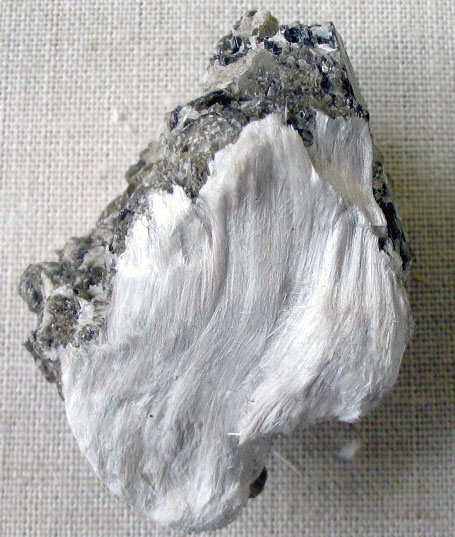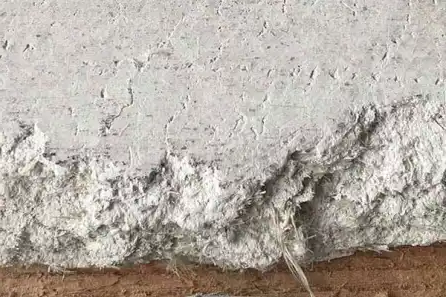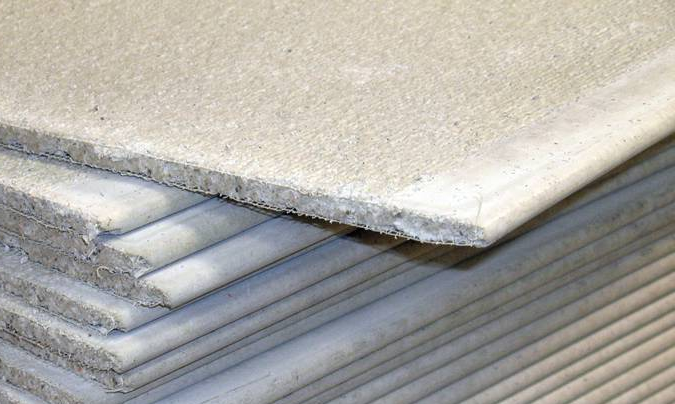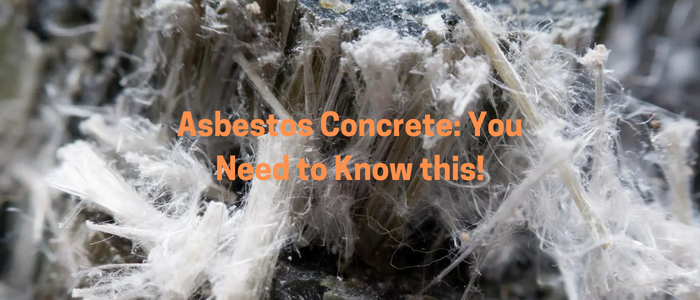So, What is Asbestos?
Asbestos is a group of six naturally occurring minerals made up of heat-resistant fibers.
The use of asbestos in not recent. Humans found that these minerals had a strong resistance to fire along with a variety of other useful qualities thousands of years ago. In the 18th century, Greeks and Romans applied asbestos in multiple applications; they even called it the Miracle Mineral.

We get asbestos by extraction from rocks that contain asbestos. Rocks are crushed and milled to get the thread like fibrous material. Each fibre being composed of many microscopic “fibrils”
Quick View on the Types and Properties of Asbestos
There are two main types for asbestos depending on the crystalline structure:
Serpentine group
The structure of serpentine minerals is layered or in sheets (sheet or layered structure). The only asbestos mineral found in the serpentine group is chrysotile (sometimes referred to as white asbestos).
Chrysotile asbestos has historically been the most widely used type in the United States. The Asbestos Building Inspectors Manual published by the U.S. Environmental Protection Agency (EPA) estimates that chrysotile makes up around 95% of all asbestos detected in American structures. Chrysotile is frequently found in a wide range of materials and products, such as:
- Drywall and joint compound (including texture coats)
- Plaster
- Vinyl floor tiles, sheeting, adhesives
- Fireproofing
- Fire blankets
Amphibole group
Up until the early 1980s, amphiboles like amosite (brown asbestos) and crocidolite (blue asbestos) were applied in a variety of industries. A significant portion, if not all, of naturally occurring chrysotile deposits contained tremolite asbestos as a contaminant.
By the middle of the 1980s, much of the Western world, as well as Japan, had prohibited the use of any kind of asbestos belonging to the amphibole category.
The following products included asbestos of the amphibole types:
- Low-density insulating board and ceiling tiles.
- Asbestos cement sheets and pipes for construction.
- Thermal and chemical insulation.
Are there Dangers of Asbestos Alone?
There are some dangers of asbestos that you should be aware of.
Asbestos was a common and inexpensive technique to provide insulation, fire protection, and strength to numerous construction materials from the early 1900s until the 1970s.
However, as a result of the health dangers that were discovered related to asbestos, several asbestos-containing products (ACMs) were banned between 1973 and 1979.
When inhaled, asbestos fibers can trigger severe illness, including cancer and a lung condition. Nowadays asbestos is not banned but regulated.
But what are the dangers of asbestos in concrete?
Are there Dangers of Asbestos Concrete?
When we embed asbestos in concrete, we get the “Asbestos Concrete”

Also, asbestos can be used with cement to create asbestos cement sheets like this:

The good news are that there are no dangers of asbestos in concrete.
When embedded in an intact surface or structure made from concrete, asbestos is essentially harmless. That’s because the fibers remain locked in place and cannot travel through the air.
However, when cutting through asbestos-impregnated concrete is required for a repair, removal, or modification project, the situation is different. When concrete is cut, mineral fibers are released into the air, providing serious health dangers to any personnel or bystanders who are not wearing protective gear.
Again, the main risk associated with any asbestos product is inhalation of airborne particles. The risk is small if the concrete is set and solid since asbestos fibers in concrete don’t go airborne without mechanical disturbance.
The biggest dangers typically exist in confined or indoor areas. An even greater amount of risk may exist in certain historic buildings that have concrete with a comparatively high asbestos content.
The main issue with asbestos-containing concrete is that it cannot be detected without expert testing. Asbestos fibres are embedded in a hardened mixture, making them difficult to see with the naked eye, unlike when they are found in wallboard and other items. This implies that for the safety of your workers, you must get the concrete at your construction, renovation, or demolition site tested.
So, Why Do We Make Asbestos Concrete?
For a variety of reasons, asbestos was used in concrete products, including:
First, due of the increased strength, the presence of asbestos fibres in a concrete mix can make the concrete less prone to crack.
Research showed that there is an increase of 33% in compressive strength and of 23% in flexural strength when asbestos was added to concrete, compared to plain concrete without asbestos.
In addition, asbestos was chosen for its:
- Fire-resistant properties
- Low cost
- Easy to acquire
- Ability to mix well with concrete components
Applications of Asbestos Concrete
- Pipe and duct insulation.
- Fire-retardant panels
- Piping
- Corrugated sheeting
- Flat sheeting
- Wall and ceiling panels.
- Roofing materials.
- Concrete Floor Tiles.
Benefits of Asbestos Concrete
- Asbestos improves the building’s energy efficiency and serves as an excellent thermal insulator.
- It does not burn quickly and has a high level of fire resistance.
- When combined with cement as an additive, it creates a composite material known as asbestos cement that is incredibly durable.
- It is widely used since it is a highly affordable and efficient material.
- In corrugated form, it is usually employed as a protective roofing material.
- It is incredibly resilient and waterproof.
- Asbestos is simple to maintain and clean but challenging to repair.
- Boost tensile strength of concrete
- Control plastic shrinkage and drying shrinkage to prevent cracking
- Make the concrete less permeable to stop water seepage,
- Unlike other fibres, which might make concrete harder to work with, it mixed smoothly into concrete mixtures.
- Unlike other fibres that leave rust spots on the surface, it was corrosion-resistant.
- It had little resistance. This made cement pipes particularly appealing.
- Due to its greater strength-to-weight ratio, it has become a popular alternative to slate or clay for roofing.
Disadvantages of Asbestos Concrete
The fact that asbestos poses a substantial health risk is the main drawback of its use. When invisible microparticles from asbestos are discharged into the air, they can result in serious illnesses if ingested over an extended period of time.
Asbestos is being replaced with alternative materials as a result of this significant drawback.
Asbestos Nowadays
Although it is still legal to produce and utilize asbestos concrete in corrugated sheets, flat sheets, and shingles, American businesses long ago stopped domestic production as the expense of litigation increased. Anyone involved with the distribution chain is at risk from both its application and importation.
So it’s unlikely that you will ever see it in new construction. You’ll find that the bulk of asbestos cement now was created in the late 1980s or earlier. In addition to the issue of human disturbance of ancient concrete, we are beginning to see asbestos concrete’s surface erosion and disintegration as its 70-year lifespan approaches an end.
Old asbestos cement piping, which was frequently used in sewage systems, drainage pipes, and storm drainage systems, is especially worrying in this regard. Finally, siding and shingles are disintegrating as a result of typical weathering. Corrosion must be carefully inspected in order to avoid endangering the public’s health. Projects to demolish and replace outdated asbestos cement will continue to be widespread in the ensuing decades. There are threats to the workers’ health in every endeavour.
Safety when working with Asbestos Concrete
OSHA Construction Standard 29 CFR 1926.1101(g) must be followed when working with asbestos concrete in order to protect the crew and the public from asbestos fibres in the air.
Read Also:
